5 Types of Walnut Trees in Wisconsin (With Pictures)
Wisconsin hosts approximately 58,000 acres of Black Walnut trees, covering over 60% of the state's walnut trees, making it a significant component of Wisconsin's hardwood forest species. These trees, predominantly found in the southern regions, contribute to both the ecosystem and the economy through their valuable wood and nuts.
In Wisconsin, the predominant walnut trees are the Black Walnut (Juglans nigra), the Butternut (Juglans cinerea), and the English Walnut (Juglans regia). Additionally, Heartnut (Juglans ailantifolia var. cordiformis) and the Buartnut, a hybrid walnut, are cultivated for their unique nut characteristics and adaptability.
Despite the state's cold winters, these walnut trees manage to thrive, especially in the more temperate southern regions of Wisconsin. The Butternut, however, faces challenges from disease, reflecting the ecological dynamics and conservation concerns of walnut trees in Wisconsin.
Summary
- Native to North America and prominent in Wisconsin, especially around Green Bay, the Black Walnut is valued for its strong, dark wood and tasty nuts.
- The Butternut, also known as White Walnut, faces threats from diseases like the Butternut canker, reducing its numbers.
- Introduced from Europe and southwest China, the English or Persian Walnut is grown in Wisconsin mainly for its nuts and timber.
- Heartnut, a variant of the Japanese walnut, is known for its distinctive heart-shaped nuts and adaptation to Wisconsin's soil and climate.
- A hybrid of the Butternut and Japanese Walnut, the Buartnut exhibits improved nut production and disease resistance.
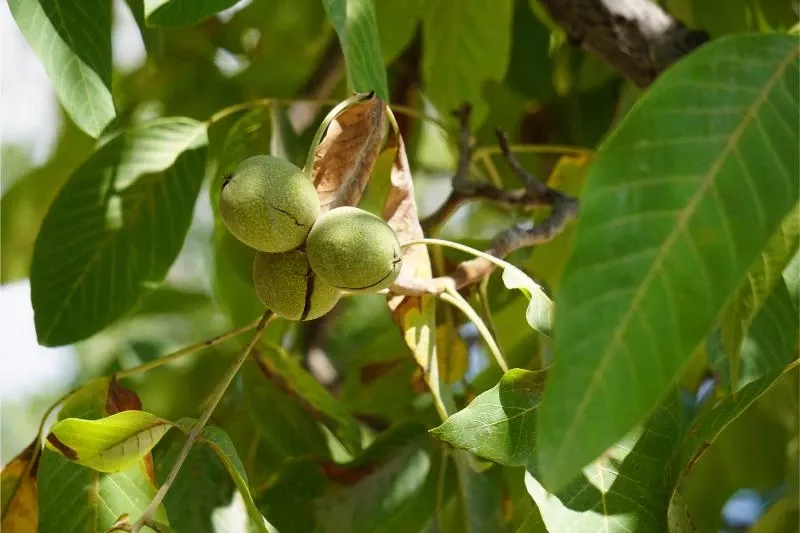
On this page:
| Species | Size (Height & Diameter) | Nut Characteristics | Habitat Preferences |
|---|---|---|---|
| Black Walnut | 50-75 ft (H), 2-4 ft (D) | Thick, hard shell; rich flavor | Deep, well-drained, fertile soils; often found in mixed forests |
| Butternut (White Walnut) | 40-60 ft (H), 1-2 ft (D) | Thinner shell than black walnut; rich, buttery flavor | Well-drained soils, often on stream banks and hill slopes |
| English Walnut | 40-60 ft (H), 2-3 ft (D) | Thinner shell; mild flavor | Deep, fertile, well-drained soils; prefers warmer climates |
| Heartnut | 40-50 ft (H), 1-2 ft (D) | Heart-shaped nuts; thin shell; sweet flavor | Rich, moist, well-drained soils; can tolerate colder climates |
| Buartnut | 40-70 ft (H), 1-2 ft (D) | Hybrid nut; characteristics vary; generally thinner shells and rich flavor | Similar to butternut and heartnut; well-drained soils preferred |
Black Walnut (Juglans Nigra)
The Black Walnut, scientifically known as Juglans nigra, is a valuable hardwood species native to North America. You might admire them for their dark brown, deeply furrowed bark and lush green foliage. In Wisconsin, these trees contribute significantly to the landscape, thriving particularly in counties around Green Bay.
The Black Walnut is perhaps the most well-known and widely distributed walnut tree in Wisconsin. It thrives in the state's rich, well-drained soils, often found along riverbanks and in mixed hardwood forests. This tree is revered for its strong, dark-colored wood and the flavorful nuts it produces, which are coveted by both wildlife and humans.
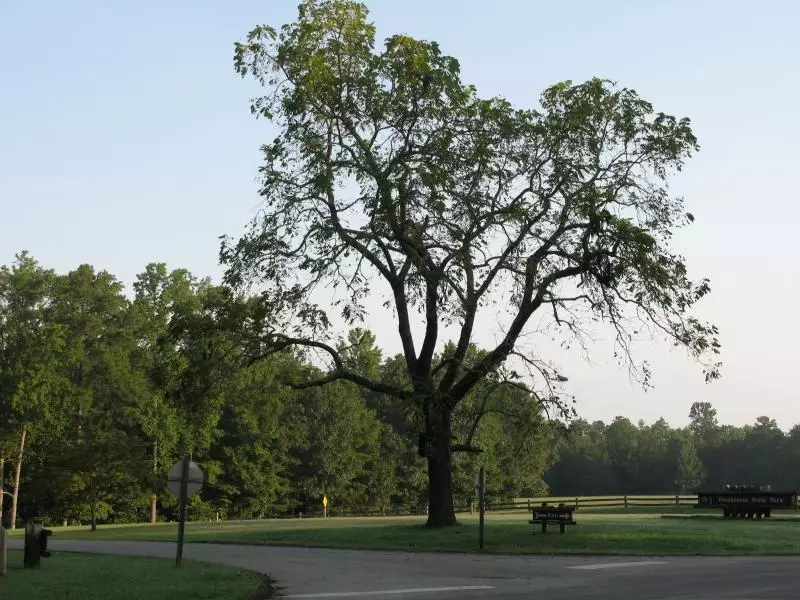
- Height and growth: It can reach heights of up to 70–100 feet with a trunk diameter of 2–4 feet.
- Leaves: The leaves are compound, with 15–23 leaflets on each leaf, and they turn yellow in the fall.
- Nuts: The nuts are encased in a thick, green husk that turns black as it ripens.
Did you know the leaflets of a black walnut are lance-shaped with serrated edges? Each leaf is composed of 15 to 23 individual leaflets, which create beautiful pinnate patterns. Come spring, catkins—slender, cylindrical flower clusters—adorn the branches, contributing to the tree's ornamental beauty.
Your black walnut tree is a robust grower. The tree's fruit, a type of drupe or nut, is sought after for both its rich taste and woodworking qualities. However, be cautious of the toxic effects of a substance called juglone, found in its roots and foliage, which affects certain plant species.
Juglans nigra is not just a visual treat but also serves a practical purpose. The timber is highly prized for making furniture due to its durability and rich color. In ecology, it plays a role as a food source for mammals and features monoecious (having both male and female flowers) reproductive characteristics.
When choosing trees for your landscape, remember the Black Walnut is more than just an ornamental tree. It's part of a larger genus, which includes other species such as the California Black Walnut and the Andean Walnut. If you're looking to add a touch of elegance with practical benefits, the black walnut might be your perfect choice.
Riverbanks in Wisconsin
Riverbanks can be found alongside the numerous rivers and streams that crisscross the state. Some of the major rivers in Wisconsin include:
- The Wisconsin River, which flows across the central part of the state and into the Mississippi River.
- The Mississippi River, which forms the western border of Wisconsin.
- The Chippewa River, a tributary of the Mississippi, flowing in the northwest.
- The Fox River, which flows into Green Bay on Lake Michigan.
- The St. Croix River, which forms part of the border between Wisconsin and Minnesota.
Mixed hardwood forests in Wisconsin
These are typically composed of a variety of deciduous trees such as oaks, maples, hickories, and, of course, walnuts. They are prevalent in several regions across the state, including:
- The Driftless Area in southwestern Wisconsin, which avoided glaciation during the last ice age, resulting in a unique topography with deeply carved river valleys and a rich diversity of plant and animal life.
- The Central Hardwood Forest region, which includes parts of southern and central Wisconsin, where you can find extensive hardwood forests.
- The Northern Highland, a forested region in northern Wisconsin with a mix of hardwoods and conifers, although the composition can be more conifer-heavy in the northernmost parts.
Butternut (Juglans Cinerea)
The Butternut, or White Walnut, is less common and considered a species of concern due to the butternut canker disease. It's found in Wisconsin's forests, often in well-drained, rich soils, similar to the Black Walnut but in cooler and moister locations. Although it's a less prevalent species, the Butternut holds its own by providing food and habitat to local wildlife.
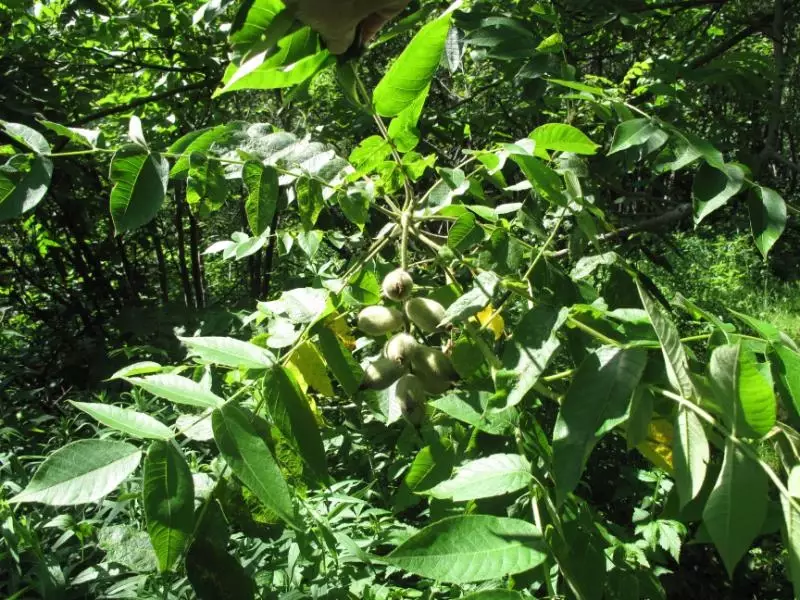
- Height and growth: Grows up to 40–60 feet tall
- Leaves: The leaves are compound like the Black Walnut but with fewer leaflets (11-17) and a lighter green color.
- Nuts: The nuts are oblong, with a sweet, oily flesh that's highly prized for its flavor.
Butternut wood is softer than Black Walnut but is valued for its light color and fine grain, suitable for carving and furniture. The nuts are sought after for their taste and are used in baking and cooking.
The Juglans cinerea stands out among trees for its light gray bark and the pinnate, long leaves that feature in the lush canopies it forms. A slow-growing species, your butternut tree may not soar as quickly as others, but its presence enriches the local ecosystem with its fruit and nut tree benefits.
When considering adding a butternut to your landscape, be mindful of the space it will inhabit. They can grow to significant heights, up to 66 feet, with some towering even higher.
These trees foster a rich habitat for wildlife in Wisconsin; its nuts are a vital resource for creatures like squirrels, and its branches make for grand nesting sites. The butternut tree's leaves eventually fall and decompose, enriching the soil of your garden with valuable nutrients.
The butternut is a nut tree that thrives on well-drained soils, typically found along hillsides or streambanks in Wisconsin. They require sufficient sunlight to grow and are often seen enhancing mixed hardwood forests. To ensure successful growth and adequate nut production, plant your butternut in an area that receives full sun.
Places where you can find hillsides and streambanks in Wisconsin
- Kettle Moraine State Forest: Located in southeastern Wisconsin, this area was shaped by glacial forces and features a landscape of kettles, kames, and moraines, resulting in rolling hills and valleys.
- Baraboo Range: An ancient range of hills in central Wisconsin known for its unique geological features, including Devil's Lake State Park, which is surrounded by quartzite bluffs.
- Niagara Escarpment: A prominent geological feature that runs through eastern Wisconsin, creating cliff faces and steep slopes.
- Along major rivers: The Wisconsin, Mississippi, Chippewa, and St. Croix rivers, among others, have extensive networks of tributaries with streambanks that support various species of flora and fauna.
English Walnut or Persian Walnut (Juglans Regia)
The English Walnut, also known as the Persian Walnut (Juglans regia), is not a native species to Wisconsin but can be found in some cultivated landscapes. Originating from Europe to southwest China, this deciduous tree is renowned for both its flavorful nuts and its high-quality timber.
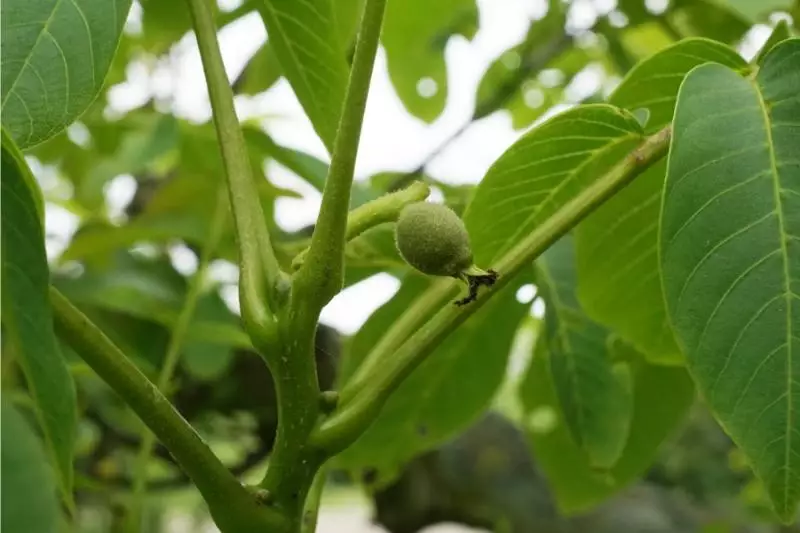
- Height and growth: Typically grows to 40–60 feet tall
- Leaves: The leaves are large, with 5–9 leaflets, and have a smoother edge compared to the Black Walnut.
- Nuts: The nuts have a thinner shell and are easier to crack, making them a favorite for direct consumption.
Juglans regia prefers well-drained, loamy soil, but it is quite adaptable to other soil types too. It's a sun-loving tree and won't do well in shade. In Wisconsin, you should protect it from cold winds due to its limited cold hardiness compared to native walnut species like the Black Walnut.
The tree typically grows with a single, sturdy trunk and develops a rounded crown as it matures. Your English Walnut's leaves will be compound, with several leaflets making up one leaf.
In spring, you'll notice the male flowers in slender catkins and small female flowers on the same tree, which suggest that the tree is self-fertile and does not require cross-pollination.
Be mindful that Juglans regia produces chemicals that may prevent growth of certain plants under its canopy, a phenomenon known as allelopathy.
The English Walnut is primarily grown for its nuts, which are widely used in cooking and baking. The nuts you'll harvest are similar to those in the produce section, differing from the native Black Walnut in being larger and easier to crack.
The wood, though not as highly valued as Black Walnut, is still used in woodworking and craft projects.
Heartnut (Juglans Ailantifolia Var. Cordiformis)
The Heartnut is a close relative of the butternut, boasting a heart-shaped nut that sets it apart. While not a native to North America, it can adapt to Wisconsin's soil and climate, offering a similar habitat value.
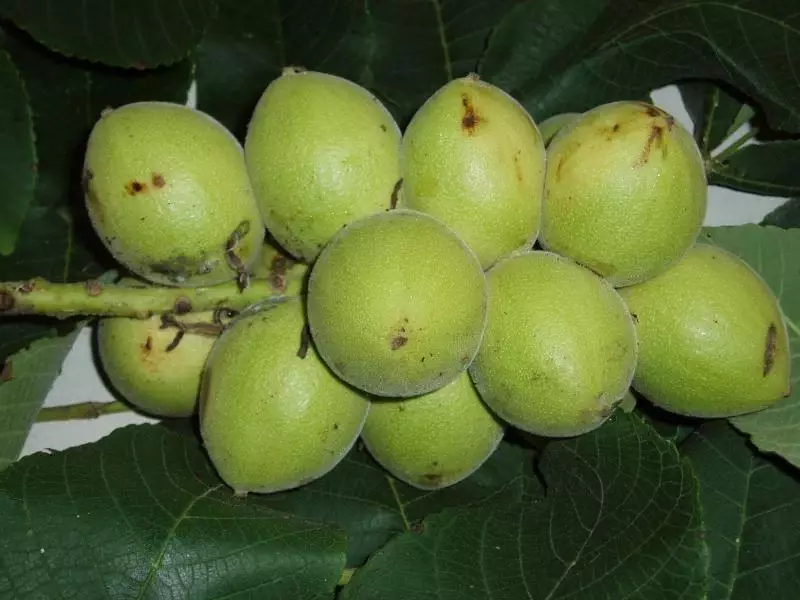
The heartnut is a variation of the Japanese walnut and is sometimes grown in Wisconsin for its nuts and attractive wood. It is not as common as the black or butternut walnuts and is more often found in specialty plantings or as part of a collection in arboreta.
Heartnuts are relatively cold hardy, but they may not tolerate the coldest regions of Wisconsin without some protection. One advantage of heartnut trees is that they are typically less susceptible to diseases that affect other walnut species, such as the butternut canker that has decimated butternut populations.
Buartnut (Juglans x bixbyi)
The Buartnut is a hybrid from crossing a Butternut tree with a Japanese Walnut (Heartnut), contributing robust qualities such as improved nut production and a resistance to diseases that often plague butternuts. This makes the Buartnut an exciting option for your Wisconsin grow.
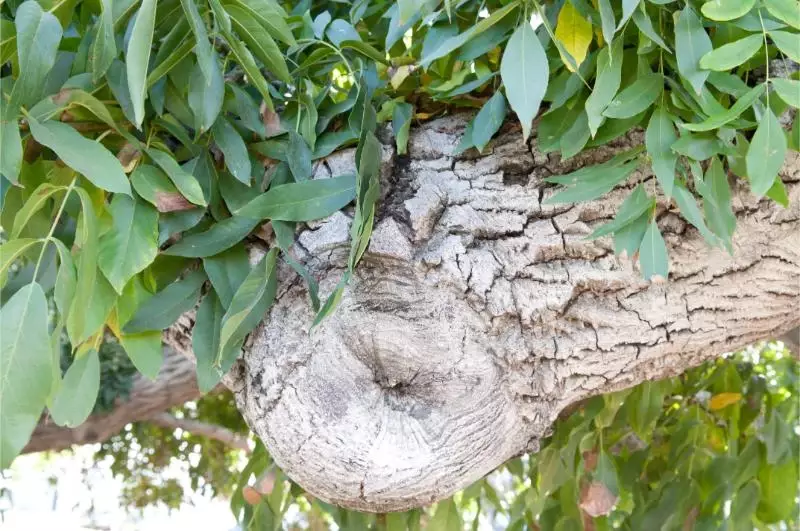
Buartnuts can vary widely in characteristics, depending on the specific parent trees used for the cross. Generally, they produce nuts that are easier to crack than black walnuts and have a rich, buttery flavor.
Tips for growing walnut trees
Choose a sunny spot
- Ensure you plant your trees where they'll receive full sun, which means at least 6 to 8 hours of direct sunlight daily, to encourage healthy growth and a vivid fall color.
- Avoid low-lying areas where frost might settle.
Plant in well-drained soils
- Your walnut trees will need well-drained, loamy soil to develop strong roots. For Wisconsin cultivars, which are quite hardy, the ideal soil pH is between 6.0 and 7.5.
Space your trees
- Walnut trees need plenty of space to grow. Plant them at least 30–40 feet apart from other trees or structures.
Water regularly
- Young trees require regular watering until they're established. During the first few years after planting, water your walnut trees deeply once a week.
- As they mature, their watering needs may decrease, but they'll still require regular checks to maintain the right soil moisture levels. Mature trees are relatively drought-tolerant.
- Keep the soil consistently moist, especially during dry spells in Wisconsin's varying climate.
Prune minimally
- Prune in the late winter or early spring to shape the tree and remove any dead or diseased branches.
- Pruning is minimal; just remove any dead or diseased stems to help your trees stay robust.



